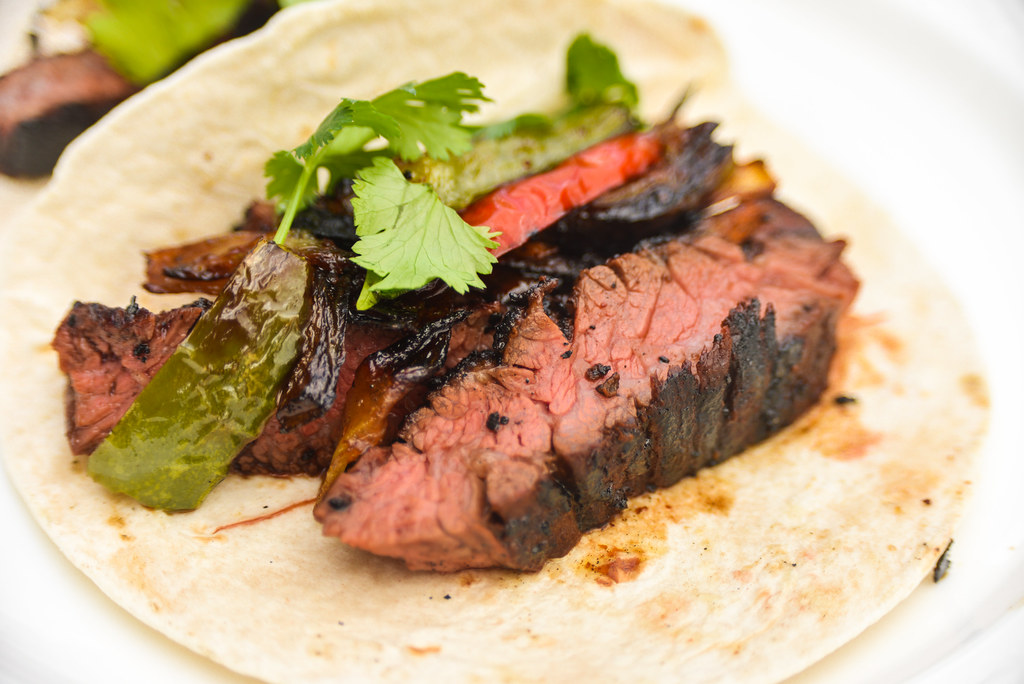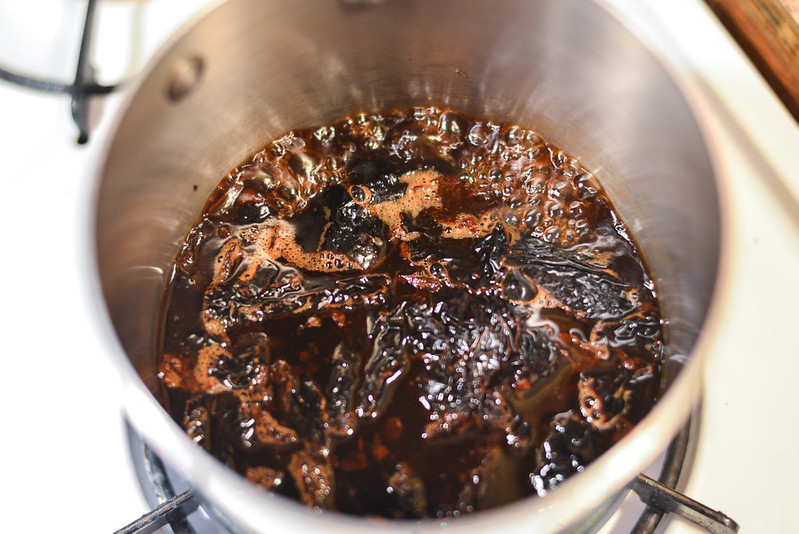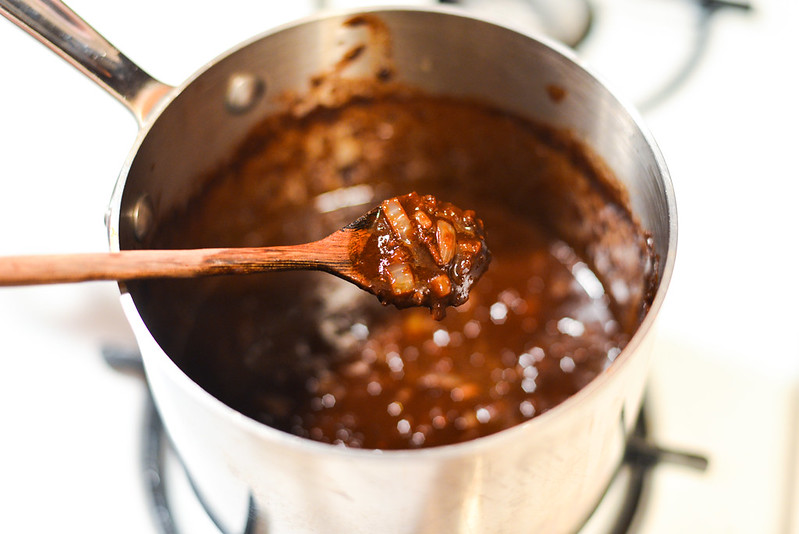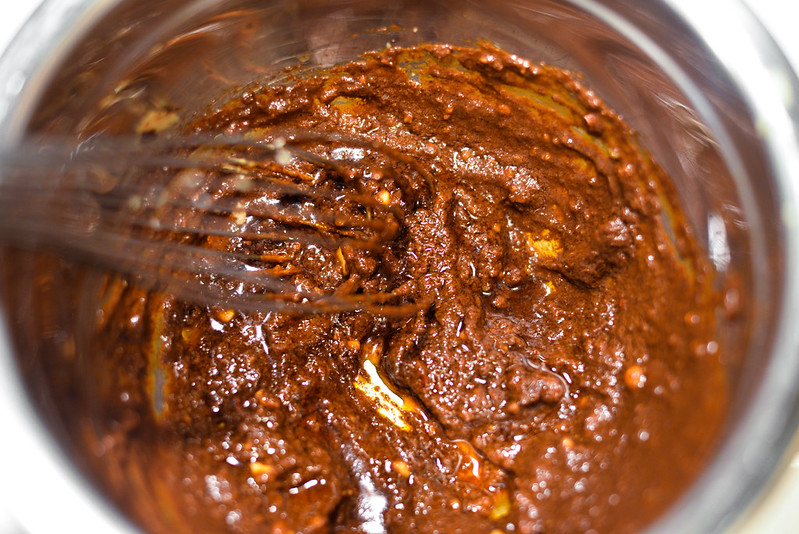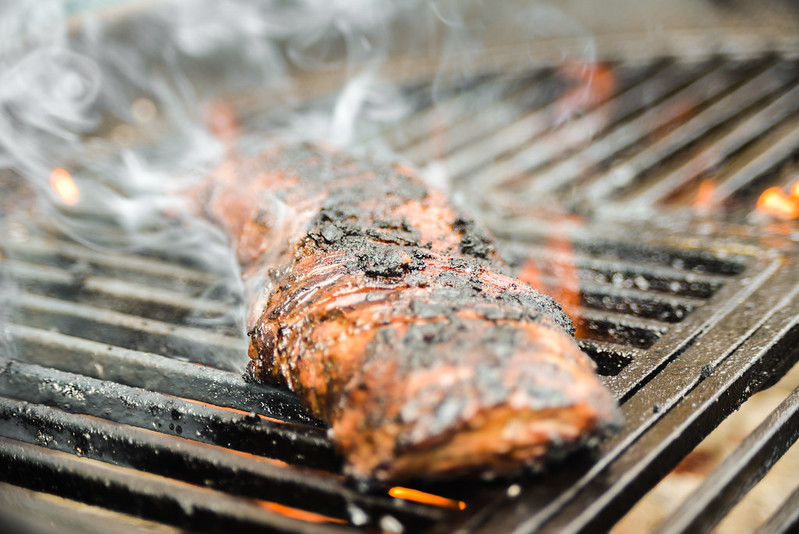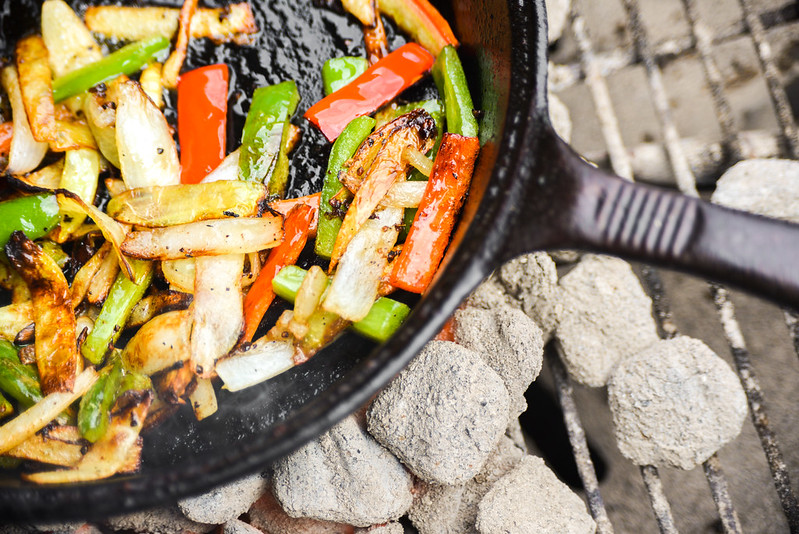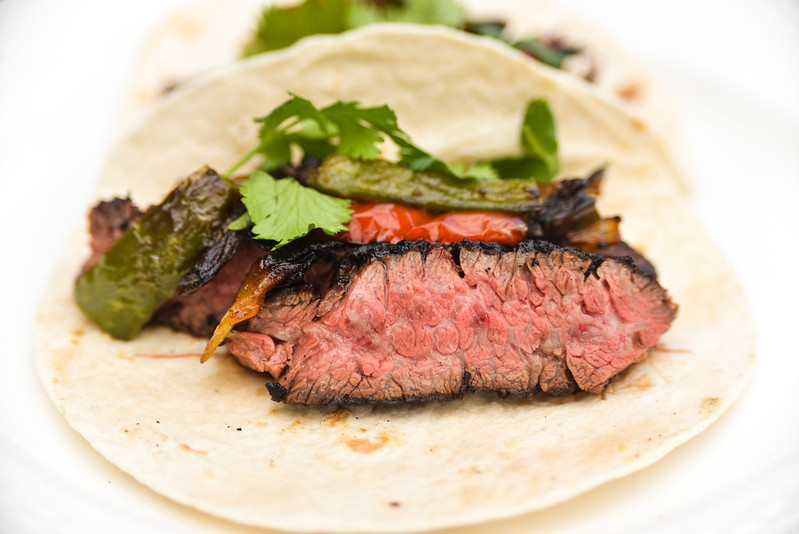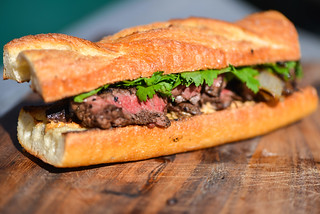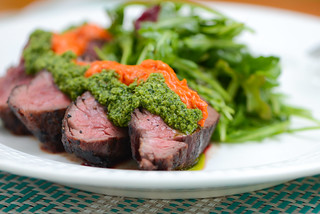Mole-Crusted Fajitas with Ancho Raisin Sauce
If I ever say I'm not in the mood for fajitas, you'll know I've been abducted and replaced by some evil doppelganger. I really, really love skirt steak, and really, really love eating it wrapped in a flour tortillas with sautéed peppers, onions, and a bit of sour cream. Even though skirt is my favorite of steaks, it's actually been the one I've experimented with the least thanks to the wonderful skirt steak recipe Alton Brown unleashed on Good Eats over ten years ago. I believe that recipe is close to perfection, so why mess with it? Well, I found at least one good reason, these mole-crusted fajitas.
These fajitas were actually a result of this ancho-raisin sauce. It was a recipe I came across in Robb Walsh's The Tex-Mex Grill and was so different from anything I would ever come up with myself, that I had to try it out.
The sauce had a coffee base in which raisins and ancho chiles were steeped. This was added to softened onions and fragrant garlic along with sherry vinegar, Worcestershire, and a small amount of coffee grounds. The resulting medium-thick sauce had incredible character—it possessed a rich complexity that started off with an earthy and slightly bitter bite, which then combined with a fruity sweetness and a little tanginess. The only thing was that it left me considering what to even use it with—it wasn't much of a dip, but it did feel like it was asking for beefy skirt steak.
I wasn't convinced the bright, acidic, and slightly sweet flavor of Alton Brown's skirt steak marinade would be the right match for this heavy sauce, but another Robb Walsh recipe for mole-encrusted skirt sounded like it would be just right. So I grabbed a bottle of mole poblano, mixed it with oil, chunky peanut butter, chipotles, and garlic to make the marinade. This wasn't a marinade that was going to penetrate the meat much, so I basically just spread the sauce onto my seasoned steak and let it sit for only as long as it took me to get the grill started.
From there I followed my normal fajita making procedure, which requires the steak to cook over a hot ass fire—best done after the coals just finished lighting for maximum heat. This sears the steak beautifully on the outside in mere minutes per side, and since you don't want to cook a skirt much past medium-rare to avoid chewiness, this also means the steak isn't on the grill long enough to cook through too much.
As the steak rests, I then remove the charcoal grate and nestle my trusty cast iron skillet into the still scorching coals. In goes the pepper, onions, olive oil, and seasoning, and the veggies then cook until softened and browned around the edges. This usually takes about the same amount of time the steak needs to rest before slicing—around 10 minutes.
I'm convinced skirt haters have suffered one, or both, of two common mistakes with this cut—either it was over cooked and/or improperly sliced. The muscle fibers on a skirt steak are long, and to make the steak tender and not chewy, those fibers need to be shortened considerably. To do this, the skirt should always be cut against the grain, preferable in thin strips 1/4-1/2" thick. This will leave you with nothing but tender steak that's easy to chew and a pleasure to eat.
Unfortunately that mole paste seemed to burn off more than bake in, but there was a faint earthy crust on the outside that was a tad too subtle to hold up against the big beefy flavor of the steak. It didn't reach the heights of the Alton Brown recipe I hold so dear, but when paired with the ancho-raisin sauce, the whole fajita really came together and was something special in its own right.
You Might Also Like
Comments
-
Charlie I've tried Robb Walsh's mole-crusted fajita recipe too, but I found that grilling it on the grates just knocked it all off. To avoid the "faint earthy crust" phenomenon, I used butterflied sirloin flap and threaded it onto skewers in long ribbons, then grilled it slowly without a grate while basting with more sauce. (I've got some pieces of angle iron that I use as kebab rails.) No grates meant no trauma, and the crust reduced and cooked on without just charring and falling off. Then I just sliced the beef off the skewer, Brazilian churrasco style.
